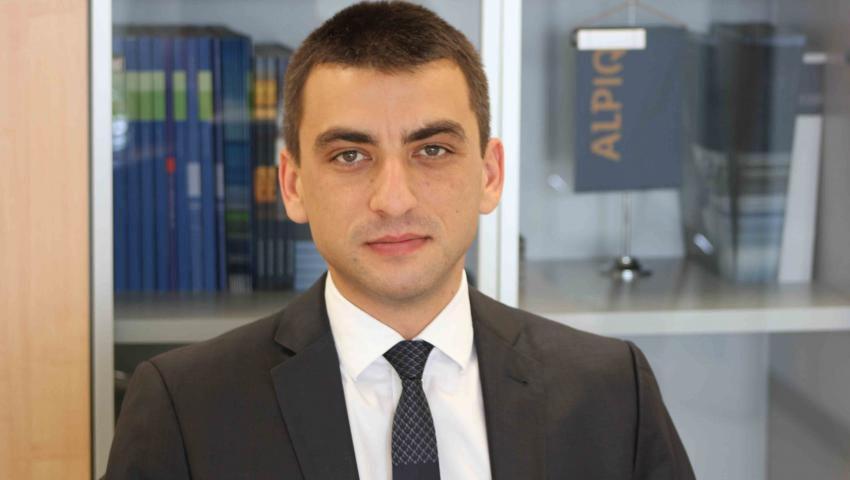Martin Georgiev: NEC has plans to build two PSHPP by 2032

There are two projects for the construction of new pumped-storage hydroelectric power plants (PSHPP) by the National Electric Company (NEC). These are the PSHPP Batak project and the PSHPP Dospat project, announced the company's executive director Martin Georgiev during the round table "Innovations in energy storage - a key to a sustainable energy transition", organized by the Association of Industrial Capital in Bulgaria (AICB). The two projects are similar. For both PSHPP, the upper equalizer is the Golyam Beglik and Shiroka Polyana dams, and for the lower equalizer, installed capacities between 800 MW are considered for each of them.
According to the presentation presented by the executive director of NEC, the project for PSHPP Batak envisages a preliminary design study and a working project in the period from the current year 2023 to 2027, during which the construction activities should possibly be started, and the commissioning - 2030.
For the Batak PSHPP project, the planned deadlines are for a preliminary design study until the end of 2026, a working design and permits in the period of 2027, start of construction activities in 2029 and planned commissioning in 2032.
The expected service life is 60 years.
He also presented PSHPP Belmeken, which has a small capacity, but is expected to be in full operation by the end of the year.
Given the early stage, the amount expected to be invested was not disclosed.
During his presentation, the executive director of NEC focused on the importance of hydropower, not forgetting to remind that the operational life of hydropower systems is of the order of 40 years and the need for maintenance and investments.
"The advantages of PSHPP as a type of storage systems are high maneuverability, high efficiency, long and useful life. In addition, they support the integration of new RES and, accordingly, the decarbonization of the system. An additional benefit is the improvement of water resources management, which in recent years with climate change is of particular importance," pointed out Martin Georgiev. According to him, even at the European level, most of the new energy storage projects envisage the construction of new PSHPP.
According to him, our region has a higher potential than the general one in the world, with the exception of Asia and Australia, there is still a lot of unused potential. "Our potential is higher than the potential of Western Europe and it can be used as investments in a competitive way," pointed out Martin Georgiev. Focusing on the role of PSHPP as an opportunity to store and balance the RES system, including in case of overproduction, and accordingly the impact on prices, he also gave specific examples
"In the last 20 years, the total capacity of hydroelectric plants has increased by more than 40% globally, but their share of total production has remained stable due to the growth of other energy sources - natural gas, coal, wind and solar energy.
70% of existing hydropower facilities in Europe have been in operation for over 40 years and need significant investments for maintenance and rehabilitation. Now the trend is reversing and PSHPP is becoming much more valuable for investors and energy systems.
The challenges facing PSHPP are the high capital costs, the long construction period and the different specifics of the terrain for each project. There are no universal projects, and funding sources are limited. Often this is related to the banks' considerations related to the environment", pointed out Martin Georgiev. He did not miss the fact that the regulatory regime is more complex and lengthy than investments in mass photovoltaic plants, for example.
"Market mechanisms are very important because investments with such a long period are difficult to realize. There needs to be certainty for investors, whether public or private. In the conditions in which this investment will function, it will be able to take full advantage of the market environment in order to have a return, which is also a requirement of the banks for project financing," he explained.
"Global trends are to build new PSHPP at existing dams, as a significant part of the capital costs have already been done as an investment," added the executive director of the electricity company, emphasizing the growing need for energy storage. However, according to him, it is the storage efficiency that is extremely important, as in these projects it reaches 87% with a technical possibility of up to 90%.
"Still, attention should be paid to the fact that most of the older built PSHPP are aimed at balancing consumption, while at the moment the need for new PSHPP is oriented to the needs of balancing the dependence on RES, and the flexible mode of operation leads to higher depreciation of equipment,” he pointed out. As one of the examples of a project that has gone through difficulties, Martin Georgiev pointed to the Drance PSHPP (installed capacity of 900 MW) in Switzerland, with construction starting in 2008 and passing through various periods of project development, so that it was put into operation only in 2022. "An interesting detail is that there are three companies as owners, and it is specific to Switzerland that each of the turbines (6 Francis type turbines with a capacity of 150 MW) is owned by a different company, but there is one common operator that operates them. PSHPP Drance is capable of storing 20 GWh with the ability to be switched from pump to generator mode in less than 5 minutes and from generator to pump in 10 minutes. The investment is in the amount of 1.5 billion euros.
